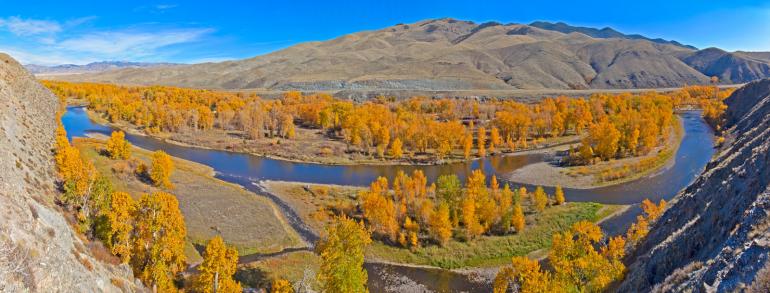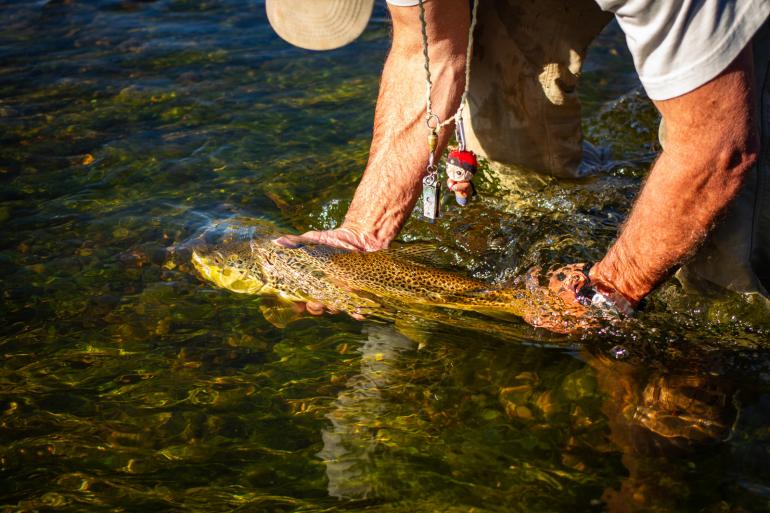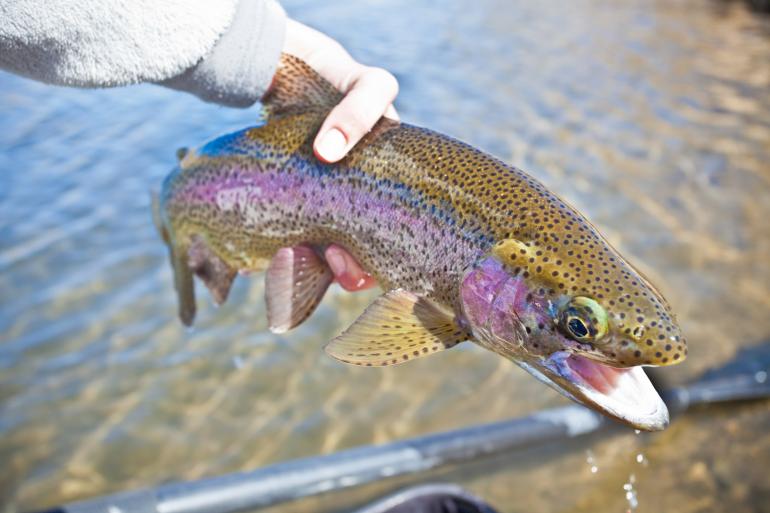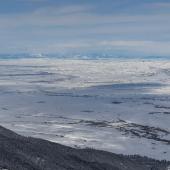Watershed Warriors
The Montanans protecting our waterways and water rights from bad actors.
Not all heroes wear capes. Some don fishing waders and hold law degrees. The folks who form the Upper Missouri Waterkeeper are such people. Working to protect Montana’s Upper Missouri River Basin, an area that covers 25,000 square miles, they use their superpowers of strong science, legal expertise, and community action to defend southwest and west-central Montana’s swimmable, fishable, and drinkable waters.
Founded in 2013 by Guy Alsentzer, the organization administers the power of the Clean Water Act, a law that grants citizens the right to sue those who pollute and contaminate America’s rivers, lakes, and streams, to dispense justice. Believing that clean, healthy waterways promote sturdy communities, the Waterkeeper actively unites with citizens, businesses, and others to stop pollution and formulate long-term solutions on matters that threaten the Missouri watershed.
Guy has a deep reverence for clean water, which was cultivated during childhood. He came to understand its importance while mucking out irrigation ditches, providing fresh water to livestock on his family farm. Twelve years since forming the Waterkeeper, Guy keeps his boots on the ground not only as executive director, but as investigator, citizen scientist, and attorney.
Trout populations are at a 40-year low. A third of Montana’s waterways have been assessed as degraded, and are plagued with pervasive pollution problems.
Other members of this small but influential group include Wade Fellin and Quincey Johnson. Wade is a fifth-generation Montanan whose deep-rooted conservation ethics were sprouted in a family that has been connected to the land of the 41st state since the 1800s. In 1984, his father created one of the West’s first destination fly-fishing lodges along the banks of the Wise River, where Wade continues to guide.
Quincey is herself an avid caretaker of Montana’s headwaters. Stemming from previous experience working in outreach and nonprofit conservation in southwest Montana, namely with the Madison River Foundation, Wildlife Conservation Society, and Big Sky Watershed Corps, Quincey has whetted the skills that make her a pillar of the Waterkeeper.
Backing up their love for the outdoors with a fistful of environmental and law degrees, this compact confluence of talent is one of the most important advocacy groups for Montana’s waterways. Standing up against bad actors, the Waterkeeper shines as an institution that holds accountable those who pollute the Treasure State’s rivers and streams.
Montana is a headwaters state, with coldwater fisheries envied by anglers the world over. But these prized waters are increasingly being harmed by human activity. Trout populations are at a 40-year low. A third of Montana’s waterways have been assessed as degraded, and are plagued with pervasive pollution problems. Waterkeeper is battling to stem the tide.
The group’s actions start at the grassroots level. Utilizing their connection with the environment, the staff acquires the dirt under their fingernails by immersing themselves in the areas they protect. Using kayaks, driftboats, their own two feet, and a steadfast old pickup truck, the intrepid trio patrols the massive basin they oversee, pinpointing sources of contamination and pollution.
But that 25,000-square-mile watershed comprises nearly a fifth of Montana’s land mass—even with a trusty pickup, that’s a staggering amount of territory to traverse. Consequently, the Waterkeeper relies heavily on citizens to report polluters. “We rely on those who care about a trout fishery,” Guy says. “We rely on our hunters and anglers that do lots of backpacking. We rely greatly on people who give a damn about our outdoors heritage.”
What’s good for trout is good for us. –Guy Alsentzer
His point is that we’re all in this together. As a Montana angler, your voice matters. As he urges: “If you see something, say something.”
The importance of that integrated relationship was recently made clear. In July, the Waterkeeper won a preliminary injunction against the approval by the Montana Department of Environmental Quality (DEQ) of the Deep Well Regional Wastewater System located right outside of West Yellowstone—situated upgradient of Hebgen Lake, and headwaters for several trout fisheries.
The facility was given authorization to discharge wastewater that could have adverse ramifications on the nearby waterways and wildlife habitat. According to Guy, the DEQ failed to properly evaluate the ecological impacts and kept the public in the dark. “We only knew about it because our members happened to be the adjacent landowners,” he explains. The disclosure by private citizens prompted the Waterkeeper to take legal action against the DEQ, and pending the outcome of the case, the facility is now scrupulously limited to the amount of wastewater it can release.
Guy emphasizes that the biggest ally of anglers, hunters, and lovers of the outdoors is the Montana Constitution. Along with the Clean Water Act, Montanans possess the strongest public-trust doctrine in the lower 48 states, protecting the cleanliness of their environment and their access to waterways—the health of which can be monitored by the vitality of fish populations. Guy considers trout the canaries in the coal mine—as they go, so goes the fitness of the rivers. “What’s good for trout,” he says, “is good for us.”
To learn more, report pollution, or donate to the cause, visit uppermissouriwaterkeeper.org.













